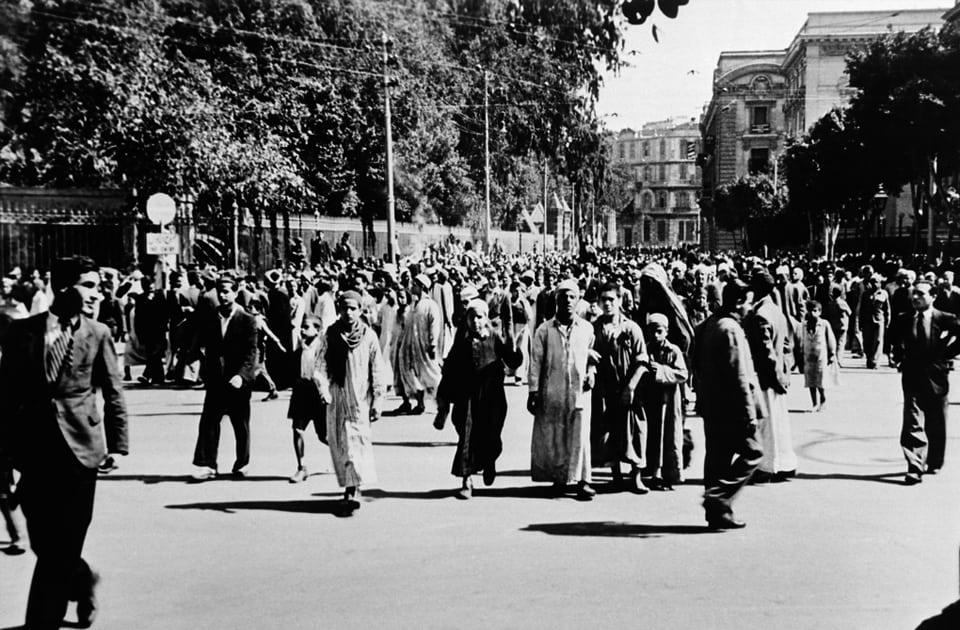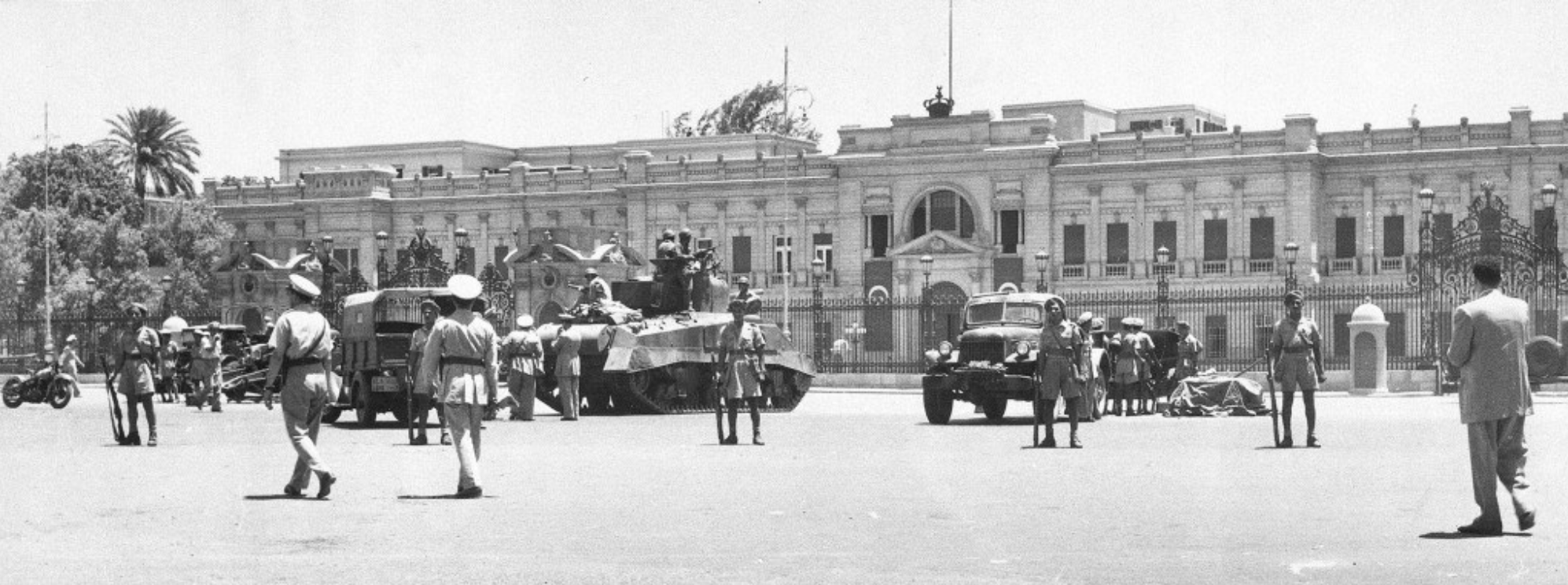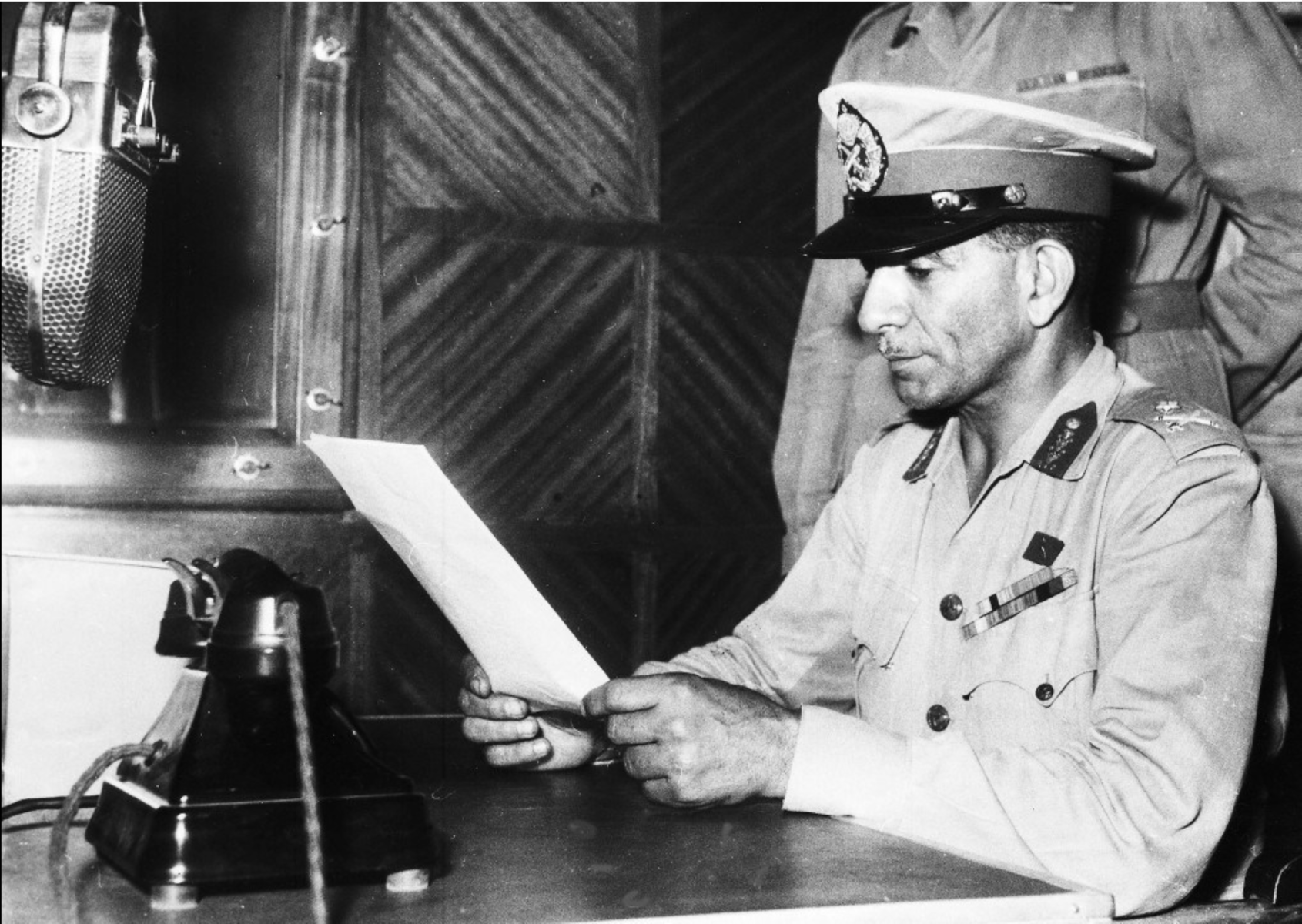CAIRO – 23 July 2020: “Abdel Nasser was a patriot who extremely loved his nation … and his Arab World,” Egypt’s President Abdel Fattah El Sisi said earlier, when asked about his opinion about the late president who led the July 23, 1952 Revolution.
The revolution overthrew King Farouk, abolished monarchy and established the republic.
The change started in 1919, when Nationalist leader Saad Zaghloul led a revolution against the British occupation in the country at the time. Thanks to the revolution, Great Britain recognized Egypt’s independence in 1922 as a kingdom and a new constitution was implemented the following year.
In 1936, King Farouk 1 succeeded his father, King Fuad 1, and ruled Egypt, supported by the Britain, which continued its presence in Egypt through keeping its forces in the Suez Canal Zone.
Following the tragic defeat in the Arab-Israeli war of 1948, Egypt’s Free Officers Movement, a group of reform-minded military officers, led by Army General Mohamed Naguib, accused the King, who had been the leader of the Armed Forces, of corruption, through providing defective weapons and munitions to the army.
The Free Officers Movement planned to overthrow the king. Their meetings were intensified until they held their last meeting on July 22, 1952.
Egypt’s state-run Al-Ahram has divided the revolution plan into parts; the first stage was to control the Armed Force through storming the military command office in the capital Cairo, the second stage was to control the government’s civilian apparatus, the third stage was to besiege the king and prevent him from contacting Egyptian or British armed forces to topple him.

A year later, the Revolutionary Command Council announced abolishing monarchy and establishing the Republic of Egypt.

Naguib was appointed as the first Egyptian president and also headed the Cabinet, while Abdel Nasser took the post of the interior minister and then the head of the government. In November, 1954, the Revolutionary Command Council relieved Naguib from all posts. Abdel Nasser then became president in 1956.

Egypt's first president Mohamed Naguib
Gains and challenges
Following the revolution, many historic procedures were taken in the political, economic and diplomatic realms, including land reform procedures, through taking agriculture lands from high-level rich owners, who controlled most of the lands, and handing them to poor peasants.
The gains also included signing a treaty with Britain in 1954 to withdraw its forces from the Suez Canal. In 1956, Nasser announced nationalizing the British-French Suez Canal company, which had operated the canal, as a response to US and Britain’s rejection to fund the establishment of the Aswan High Dam in Upper Egypt, due to Egypt’s recognition of China at the time.
مساء dmc - | خطاب الرئيس جمال عبد الناصر في تأميم قناة السويس 1956 |
مساء dmc - | خطاب الرئيس جمال عبد الناصر في تأميم قناة السويس 1956 | إشترك الآن: https://goo.gl/NQkcZ5 فيسبوك: https://www.facebook.com/dmctveg تويتر: https:...
In 1958, a political union between Egypt and Syria was formed under the name of the “United Arab Republic” with a unified Parliament. However, the union was demolished following a coup d’etat in 1961.
Late in 1956, Egypt was invaded by the “tripartite aggression” of Israel, UK and France, to regain control on the Suez Canal and overthrow Nasser following his nationalization announcement and due to Egypt’s support to the Algerian revolt against the French occupation. The reasons of the war, known also as the “Suez Crisis,” also included Egypt’s import of weapons from the Soviet Union to fight Israel, after the US refused to sell weapons to Egypt.
In 63rd ann. of Tripartite Aggression, members of popular resistance tell heroic stories
CAIRO - 2 November 2019: In the 63rd anniversary of the Tripartite Aggression waged by France, Britain, and Israel against Egypt, Egypt Today spoke with former members of the popular resistance in Port Said, a governorate bordering the Suez Canal.
The tripartite aggression made its way managed to occupy the Egyptian territories but failed to last for many firm reasons. After the aggression, the Soviet Union threatened to intervene to support Egyptians and attack London and Paris with nuclear weapons. Also, the US called on the forces of the three occupiers to withdraw, as a result of the Soviet Union’s threats. The United Nations also played a role as it threatened to impose sanctions on the three nations.
مشاهد من العدوان الثلاثى على مصر عام 56 ودخول الدبابات مدينه بور سعيد
مشاهد جديده للعدوان الثلاثى على مصر عام 56 ودخول الدبابات مدينه بور سعيد
Abdel Nasser’s unarguably worst challenge was when a war between Israel in 1967 against Egypt, Jordan and Syria together, ended in six days after Israel occupied Egypt’s Sinai, Palestine’s Gaza Strip and West Bank and Syria’s Golan and destroyed most of the Arab military equipment there. All these parts are still occupied until now except Sinai.
Abdel Nasser decided to resign but reversed his decision after massive protests urged him to remain in power.
“I took a decision that I want you all to help me with: I decided to completely and permanently resign from any official position and any political role and to return to the ranks of the masses, to carry out my duty with them, like any other citizen”.
خطاب التنحى كاملاً
خطاب التنحى كاملاً
Three years later and three years before the 1973 victory against Israel and liberation of Sinai, Nasser died, while Egypt's economy at the time was stronger than that of South Korea, Al-Ahram reported, with a surplus of hard currency that exceeded $250 million, according to the World Bank.
#هنا_العاصمة | شاهد...لحظات وفاة وجنازة الراحل " جمال عبد الناصر "
Join and Follow us on : Website : http://cbc-eg.com/cbc YouTube : http://www.youtube.com/cbcegypt Facebook : http://www.facebook.com/cbcegypt Google+: http:/...
Stunning Photographs of Egypt's July 23 Revolution
The Egyptian coup of 1952, better known as the July 23 Revolution, was an attempt to overthrow the reigning King Farouk and oust the British occupation. The Free Officers, a group of Egyptian nationalist officers in the armed forces led by Mohammed Naguib and Gamal Abdel Nasser, instigated the movement.
Comments
Leave a Comment